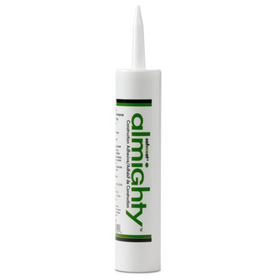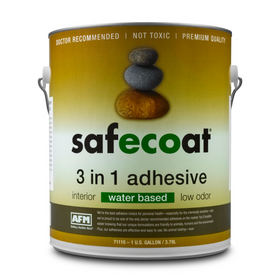
Compressed Earth Blocks for Residential Walls
Last Updated: Mar 17, 2025Does the idea of a homemade house made of earth make you think of poverty and misfortune? The image of one-room mud huts and dirt structures are hastily thrown together is a far cry from the comfortable, modern-day homes that we have come to expect. On a worldwide scale, around 30 percent of the world’s population uses the earth as a construction material for their homes. For many of these people, homes made from the dirt beneath their feet is the only economically feasible option to build a shelter for their family. But even if you can afford more, it’s worth noting that earthen construction methods offer several important sustainability benefits.
Compressed earth blocks (CEB) is a unique earthen construction technique that combines the sustainability benefits of using dirt for our homes' walls while significantly improving the aesthetics and structural integrity and strength of earthen structures. This low-cost sustainable building alternative allows homeowners to build beautiful earthen walls from local soils and clays that contribute to a heat-regulating and moisture resistant home. Homes made from compressed earth blocks prove that sustainability does not mean a sacrifice in comfort and beauty.
Table of Contents
- What are Compressed Earth Blocks?
- Sustainability Advantages of Compressed Earth Blocks
- Examples of Compressed Earth Blocks in Sustainable Constructions Projects
What are Compressed Earth Blocks?
Compressed Earth Blocks are innovative, natural, and sustainable construction material. Whereas most vernacular, earthen building techniques are artisanal in nature, these blocks are a manufactured construction material that radically increases the strength, performance, and durability of traditional earthen structures. The compressed earthen blocks combine on-site soils, non-expansive clays, and aggregate (usually lime or Portland cement) to stabilize. The proportion of soil and clay is dependent on the type of dirt that can be found on-site, but a mixture of 75 percent sandy soil and 25 percent of clay soil is ideal, as it will reduce shrinkage that can lead to cracking. A percentage of 4 to 8 percent of Portland cement is added to stabilize the mix, aid in the drying process, and offer moisture resistance.
Once the basic materials are mixed, they are placed in a mechanical press to be taken to the building site. With a small work team, all of the earthen blocks can be made within a two to three day period. Once manufactured from the mechanical press, the blocks are left to dry for anywhere between 7 and 28 days before being ready to use. After one month of drying, the compressed earth blocks are completely water-resistant and can be used like regular bricks or cinder blocks for wall construction. Compressed earth blocks can be combined with concrete and rebar columns for added seismic resistance in seismic areas.
Sustainability Advantages of Compressed Earth Blocks
1. Low Embodied Energy
The embodied energy footprint of the homes that we live in is the total combined energy consumed by all of the processes that make up a building's production. This energy includes the mining and processing of natural resources, manufacturing the basic materials used for home construction, transportation of those products to the building site, and the energy used to construct the building. While most sustainable builders and architects focus on the operational efficiency of the home as one of the main tenets of home sustainability, the embodied energy footprint also needs to be taken into context, as operational efficiency gains can actually be canceled out due to an increased embodied energy footprint that comes with new home construction. For this reason, many sustainability experts find that renovating an older home is often more environmentally friendly than building a more energy-efficient new home.

In this context, the most important sustainability advantage that comes with compressed earth blocks is that they can be made from local soils and clays found directly or near the building site. Because these blocks are made from a mechanical press that can be taken to the building site, the walls of your home will essentially have an embodied energy footprint of zero. A traditional stick-built home located in Texas, for example, might be made from 2x4s and plywood that came from pine forests cut down in Washington State, shipped to a mill in California, before being transported to the building site where the walls are eventually built. Walls built from compressed earth blocks, on the other hand, can be built from materials locally excavated, locally manufactured, and with zero (or close to zero) transportation requirements.
2. Low to Zero Carbon Emissions
Compressed earth blocks can have almost zero carbon emissions. Engineers who have perfected this technique find that 65 percent of all soils are suitable for compressing earth block walls, reducing the need to transport soil from other sites. Whereas fired bricks require a large amount of energy to process and manufacture (and create large amounts of carbon emissions through the firing process), compressed earth bricks can be made in manual presses. They can be naturally dried by the sun and wind. Thus, compressed earth blocks' manufacturing process is several times more energy effective than construction with fired bricks.
3. A lot of Thermal Mass
Another major benefit of building with compressed earth blocks is that the walls will bring a large amount of thermal mass into your home, which can subsequently be used for passive solar heating to help regulate your home's internal temperature and reduce your heating and cooling loads. Also, due to the large proportion of clay and soil used in these bricks, the walls will naturally “breathe,” thus regulating indoor humidity levels and improving the overall indoor air quality. Homes made from compressed earth blocks will have a relative interior humidity level of between 40 and 60 percent.
4. Fire-proof
Houses made from compressed earth blocks are also 100 percent fireproof.
5. Zero Waste
Once a home made from compressed earth blocks needs to be torn down after a lifetime of use, the walls' materials will reintegrate into the earth from where they came. This will drastically reduce the amount of construction waste, taking up an enormous amount of space in landfills across the country. In this context, earthen blocks can be considered a cradle-to-cradle product.
Examples of Compressed Earth Blocks in Sustainable Constructions Projects
Compressed earth blocks have been used in several countries worldwide as an improvement on traditional earthen building techniques. In Mexico, a home built with compressed earth blocks was built by Pienza Sostenible after the 2017 earthquake affected thousands of homes. This home was built entirely from compressed earth blocks that were manufactured in situ. It provided a new home for a local family built from the soil on their land while also improving their home's structural strength, which is located in a seismic zone.

In the United States, a recent report by the U.S. Department of Housing and Urban Development found that compressed earth blocks offer an innovative, sustainable, economic, and structural sound building strategy for indigenous populations in the southwestern part of the country. The report goes on to show how homes built from CEBs “are sturdier and lower maintenance than most other homes” and “are generally more energy-efficient to manufacture than cement-based concrete materials.”
While compressed earth blocks might not be an option for every homeowner, they certainly offer a low-cost, more sustainable building alternative for people looking to reduce the embodied footprint of their new home construction.
Tobias Roberts
Tobias runs an agroecology farm and a natural building collective in the mountains of El Salvador. He specializes in earthen construction methods and uses permaculture design methods to integrate structures into the sustainability of the landscape.










